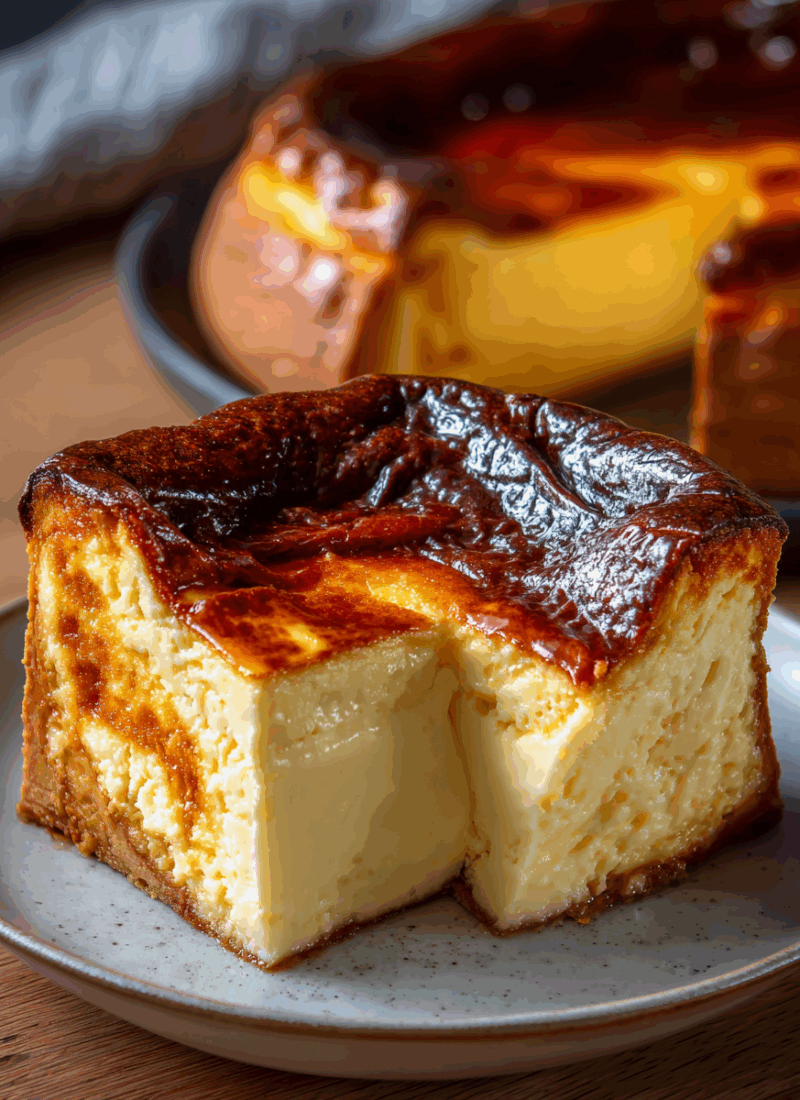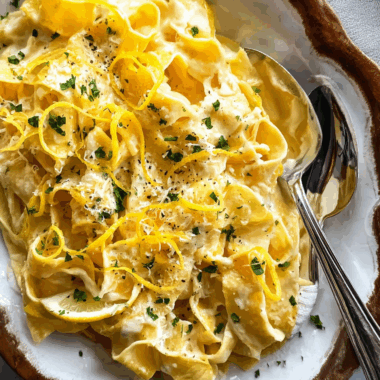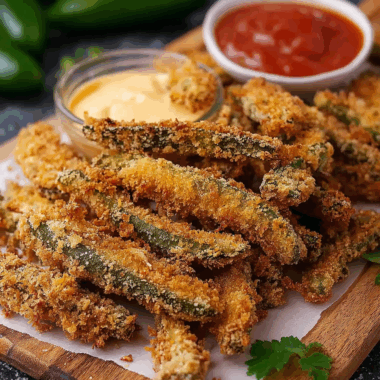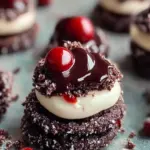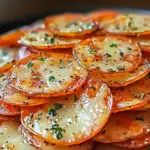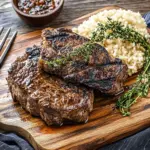Basque cheesecake is a rich and creamy dessert that embraces imperfection. With its caramelized, slightly burnt top and velvety custard center, it is a one-of-a-kind cheesecake experience. This Loaf Pan version is smaller, making it perfect for small gatherings or personal indulgence, and is simpler to make than traditional cheesecakes with no crust, no water bath, and no complicated techniques.
Full Recipe:
Ingredients
-
8 oz (225g) cream cheese, softened
-
½ cup granulated sugar
-
2 large eggs
-
½ cup heavy cream
-
½ tsp vanilla extract
-
1 tbsp all-purpose flour (or cornstarch for gluten-free)
-
¼ tsp salt
Directions
-
Prepare the Oven and Pan: Preheat your oven to 400°F (200°C). Line a 9×5-inch loaf pan with parchment paper, leaving extra hanging over the edges for easy removal.
-
Make the Cheesecake Batter: Beat the cream cheese and sugar together in a large bowl until smooth and creamy. Add the eggs one at a time, beating after each. Mix in the heavy cream, vanilla, flour (or cornstarch), and salt, stirring until just combined.
-
Pour and Bake: Pour the batter into the prepared loaf pan, smoothing the top with a spatula. Bake for 45-50 minutes, until the top is golden and slightly cracked. The center should still jiggle slightly when shaken.
-
Cool and Serve: Let the cheesecake cool in the pan for 1 hour, then refrigerate for at least 2 hours (or overnight). Once set, remove from the pan using the parchment paper and slice.
-
Enjoy: Serve chilled or at room temperature, optionally topped with powdered sugar or fresh berries. Enjoy the rich, creamy texture and unique burnt flavor!
Nutrients (Per Slice)
-
Calories: 320 kcal
-
Carbohydrates: 18g
-
Protein: 6g
-
Fat: 25g
-
Fiber: 0g
-
Sugar: 15g
The Uniqueness of Basque Cheesecake
What makes Basque cheesecake stand out from traditional cheesecakes is its delightful imperfections. The top of the cheesecake is intentionally overbaked, leading to a dark caramelized layer that contrasts beautifully with the creamy, custard-like interior. This “burnt” appearance gives the cheesecake its signature character, making it instantly recognizable and truly one-of-a-kind. The slight bitterness of the top layer balances the sweetness of the custard center, creating a harmony of flavors that makes each bite irresistible.
The texture of Basque cheesecake is equally remarkable. Unlike the dense, firm texture of many traditional cheesecakes, Basque cheesecake boasts a rich, velvety smoothness that melts in your mouth. The creamy filling is indulgent yet not overly heavy, making it a perfect dessert after a rich meal or as a standalone treat. This contrast between the intense flavor of the burnt top and the smooth interior is what elevates the Basque cheesecake to something truly special.
Loaf Pan Version: A Simpler Approach
The classic Basque cheesecake is often baked in a round springform pan, but this loaf pan version offers a simpler approach without sacrificing any of the signature flavors or textures. The loaf pan version is also smaller, which makes it perfect for serving smaller gatherings or for those who want to indulge without the temptation of a large, multi-serving cheesecake. The smaller size also means less baking time, making it quicker to prepare and more suitable for casual baking days.
Using a loaf pan also simplifies the baking process in terms of serving and cleanup. The parchment paper lining makes it easy to remove the cheesecake from the pan once it’s fully chilled and set, ensuring that the dessert maintains its shape without the need for intricate unmolding techniques. This simplicity, paired with the ability to bake and cool the cheesecake in just a few hours, makes this version accessible to both beginners and experienced bakers.
Ingredients That Make It Rich and Creamy
The ingredients in this Basque cheesecake are straightforward, yet each one plays a key role in achieving its signature flavor and texture. Cream cheese is the star ingredient, contributing to the cheesecake’s smooth, velvety texture and rich, tangy flavor. The heavy cream adds a luxurious creaminess that enhances the texture, while the eggs help to set the cheesecake and provide a slight custardy consistency.
Vanilla extract is used to enhance the overall flavor of the dessert, giving it a warm, aromatic note that complements the cream cheese. A small amount of all-purpose flour (or cornstarch for a gluten-free version) is added to stabilize the batter and ensure that the cheesecake has the right amount of structure once baked. The touch of salt helps to balance the sweetness, ensuring that the dessert isn’t overly sugary.
The simplicity of these ingredients is part of what makes Basque cheesecake so charming. It’s a testament to how just a few basic items, combined with a bit of patience, can create something extraordinary.
Baking Process: Creating the Caramelized Top
The process of making Basque cheesecake is relatively simple, but the key to achieving its signature appearance and texture lies in the baking. Preheating the oven to a high temperature of 400°F (200°C) is essential for creating the caramelized, slightly burnt top layer. The high heat ensures that the top of the cheesecake turns golden brown and forms a slight crack, which adds to the rustic appeal of the dessert.
During baking, the cheesecake puffs up and then settles as it cools, leaving behind the familiar cracks in the top. The top should be golden brown and slightly charred, with the center still wobbly when you gently shake the pan. This wobble is crucial because it signals that the cheesecake’s interior remains creamy and custard-like. The combination of a caramelized top and a rich, smooth interior is what makes this dessert so unique and delicious.
Cooling and Serving
After baking, it’s important to allow the cheesecake to cool in the pan for at least an hour. This helps the structure set before being refrigerated for a few more hours. The cheesecake should then be chilled for a minimum of two hours, or ideally overnight, to allow the flavors to meld and the texture to firm up. The result is a cheesecake that’s perfectly balanced between a slightly burnt top and a smooth, rich custard center.
Once the cheesecake has cooled and set, it can be easily removed from the loaf pan using the parchment paper. This makes for a clean and simple presentation, with the loaf-shaped cheesecake ready to be sliced into individual portions. It can be served chilled or at room temperature, depending on your preference. For an added touch, a dusting of powdered sugar or a handful of fresh berries can be added on top to enhance both the flavor and visual appeal.
Perfect Pairings
Basque cheesecake is indulgent on its own, but there are a few delightful pairings that can elevate the experience even further. A cup of espresso or strong black coffee makes a perfect accompaniment, as the bitterness of the coffee contrasts wonderfully with the rich, creamy sweetness of the cheesecake. Alternatively, a glass of dessert wine, such as a late harvest Riesling or Moscato, can complement the flavors of the cheesecake without overpowering them.
For a more refreshing contrast, you can serve the cheesecake with a light fruit compote or fresh berries. The tartness of the fruit helps balance the richness of the cheesecake, while the natural sweetness enhances the dessert’s overall flavor profile.
Conclusion
Basque cheesecake is a dessert that celebrates simplicity and imperfection. Its signature burnt top and creamy, custard-like interior create a flavor profile that’s both bold and comforting. This loaf pan version offers a more accessible approach, making it perfect for smaller gatherings or personal indulgence. With minimal ingredients and a straightforward baking process, it’s easy to see why this cheesecake has become a modern favorite. Whether served on its own or with a refreshing drink or fruit topping, Basque cheesecake is sure to impress with its unique appearance and indulgent flavor. Enjoy the rich, velvety texture and one-of-a-kind burnt flavor with every bite.

